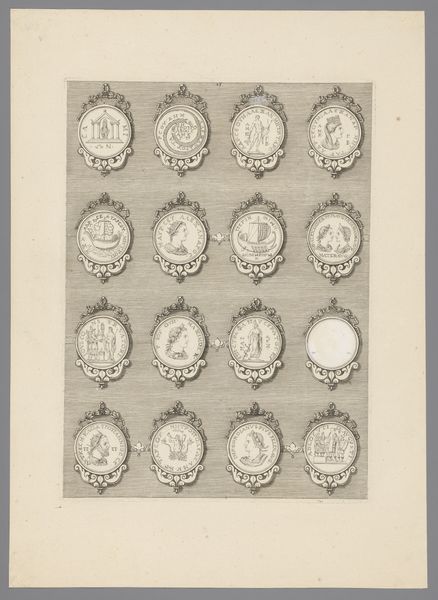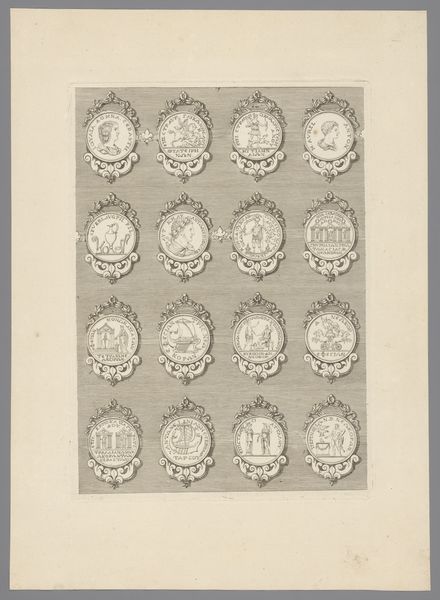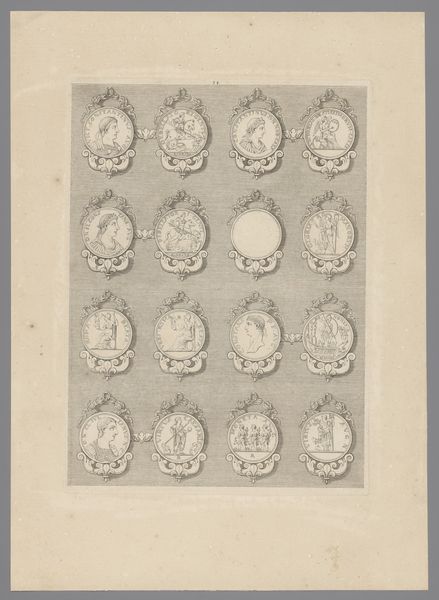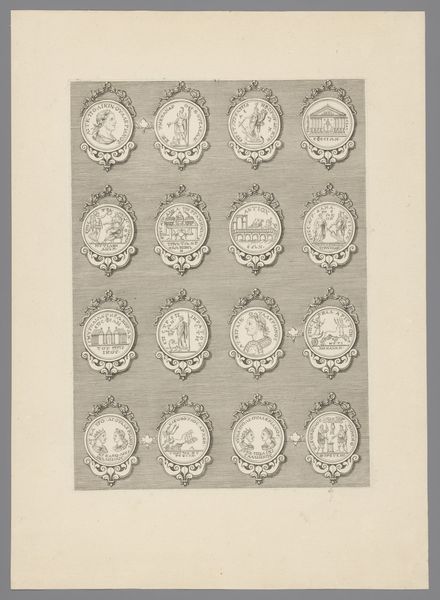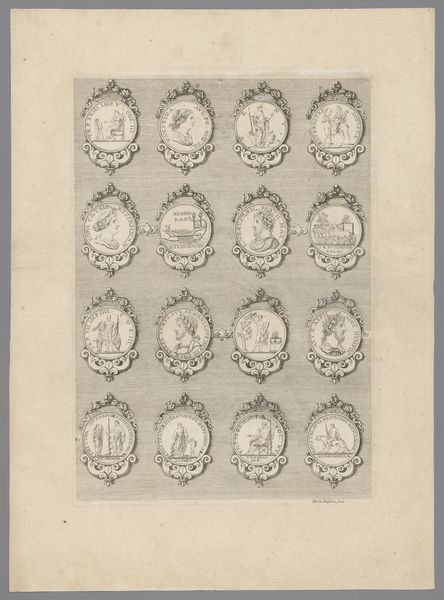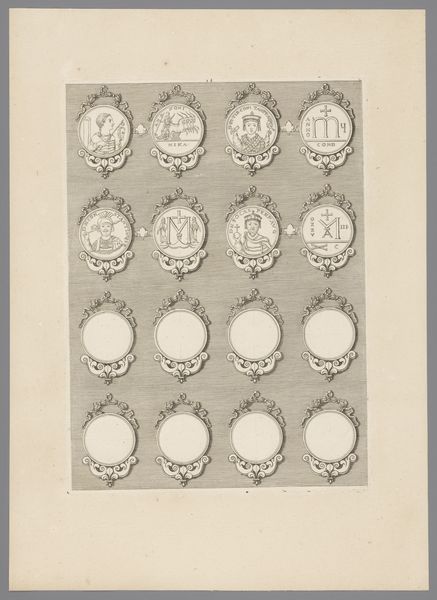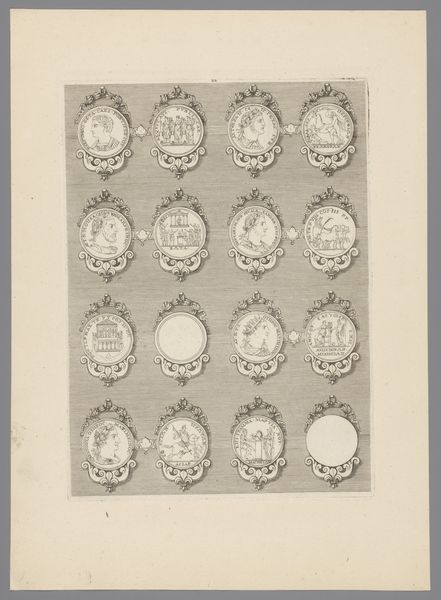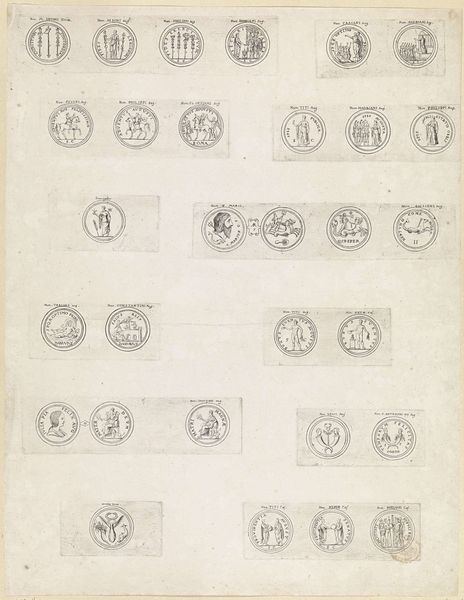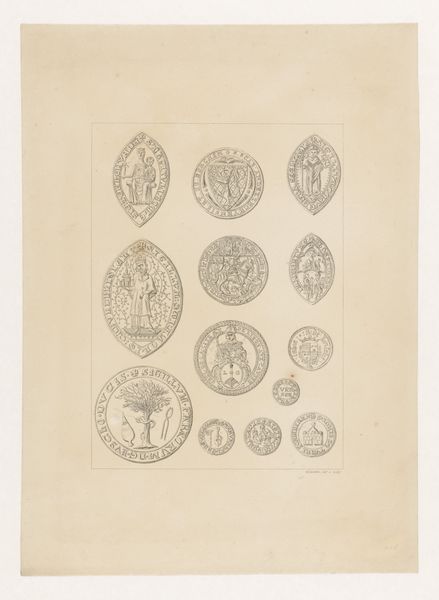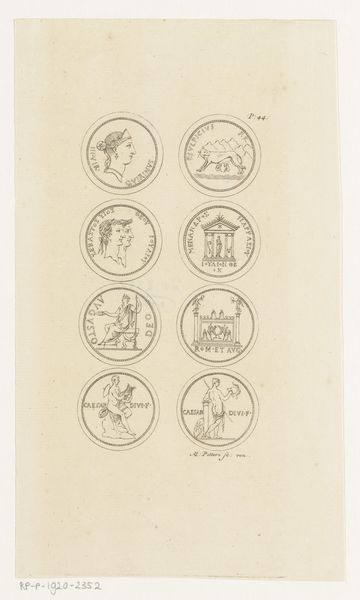
print, engraving
#
portrait
#
aged paper
#
baroque
#
ink paper printed
# print
#
geometric
#
history-painting
#
engraving
#
miniature
Dimensions: height 394 mm, width 290 mm
Copyright: Rijks Museum: Open Domain
Editor: We're looking at "Zestien penningen met versierde lijsten," dating from 1647 to 1682, attributed to Simon de la Boissière. It's a print, specifically an engraving. At first glance, I'm struck by the repetition of the circular forms. How do you approach this piece, focusing on its formal aspects? Curator: Initially, my gaze is drawn to the stark contrast between the delicate, curvilinear frames and the somewhat rigid arrangement of the medallions themselves. Notice how each circular form contains miniature scenes and portraits. It is in these microcosms that a sophisticated tension exists; each demands individual inspection, yet is inextricably linked within the overarching grid. How does the use of line impact your reading? Editor: I see that the engraving technique allows for incredible detail, especially within the small medallions. The fine lines create shading and depth, even in such a limited space. But what meaning can we derive from this particular formal construction? Curator: The artist masterfully utilizes line to articulate both form and texture. Consider the treatment of the portraits; observe how subtle gradations of light and shadow delineate facial features and suggest volume. Each mark is precise, intentional. This formal arrangement underscores a clear organizational principle— perhaps reflective of a contemporary desire for order and categorization? The artist seeks visual harmony and intellectual clarity. Editor: That's fascinating. So you see the formal elements reflecting broader intellectual trends of the time? I wouldn't have picked up on that so readily. Curator: Precisely. The formal language never exists in isolation; it invariably mirrors, or even subtly subverts, the cultural currents from which it arises. Ultimately, appreciating such an image resides in patiently deciphering these relationships through acute, analytical perception. Editor: Thank you for your insight. It really emphasizes the importance of looking closely at composition and technique to understand a work of art.
Comments
No comments
Be the first to comment and join the conversation on the ultimate creative platform.
